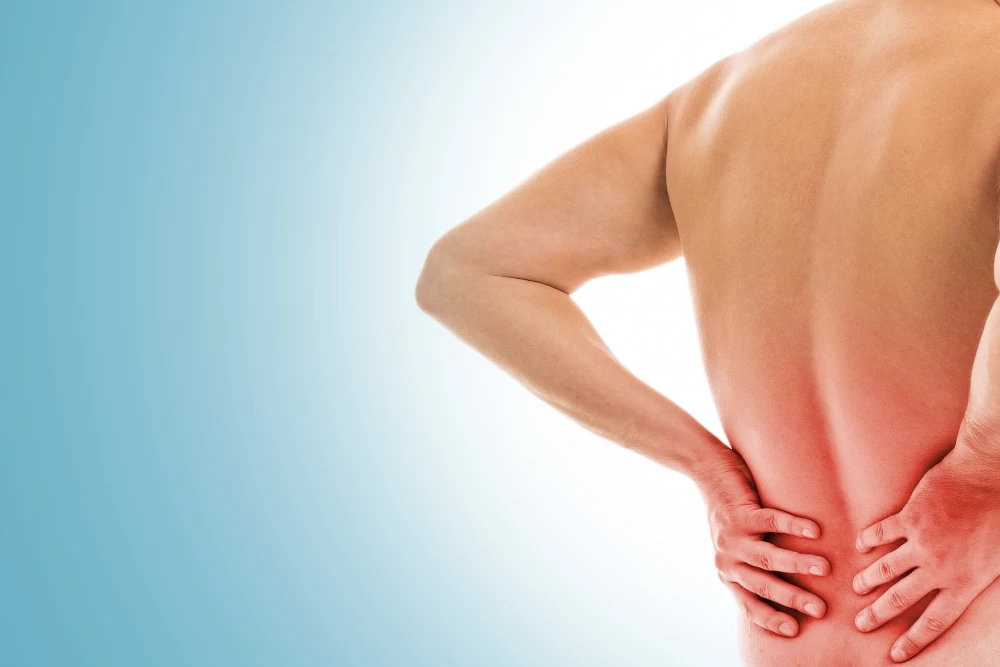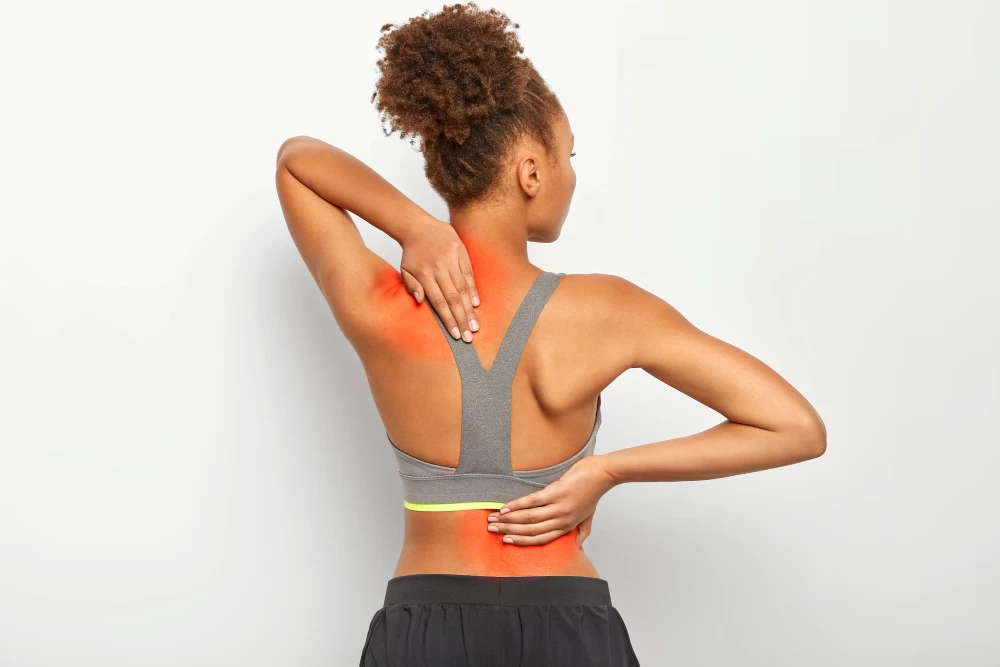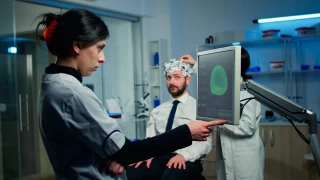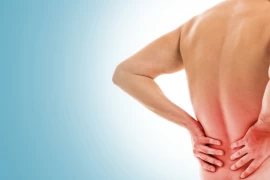
Lumbar Narrow Canal
- Lumbar Narrow Canal
- What are the Symptoms of Lumbar Narrow Canal?
- What are the Lumbar Narrow Canal Types?
- What are Lumbar Narrow Canal Treatment Methods?
- What are the Points to Consider in Lumbar Narrow Canal Treatment?
Lumbar stenosis, also known as spinal stenosis or lumbar spinal stenosis, refers to a medical condition in which the spinal canal in the lumbar region narrows and puts pressure on the nerves and spinal cord. This narrowing can be caused by a variety of factors, including degenerative changes, herniated discs, bone spurs, thickened ligaments, tumors, or spinal cord injuries.
As a result of low back stenosis, the patient may experience symptoms such as pain, weakness, numbness or tingling in the waist, hips, legs and feet. Symptoms may be worsened by standing, walking, or other activities that put pressure on the spine, and may be relieved by sitting or leaning forward.
Lumbar narrow canal is typically diagnosed with imaging tests such as X-rays, CT scans or MRI scans. Treatment options may include medication, physical therapy, epidural injections, or in severe cases, surgery to open the spinal cord and relieve pressure on the nerves.
What are the Symptoms of Lumbar Narrow Canal?
Lumbar spinal stenosis, also known as lumbar stenosis, is a condition in which the spinal canal in the lower back narrows and puts pressure on the spinal cord and nerves.
Symptoms of lumbar narrow canal can vary, but common ones include:
- Back pain: This can be a dull ache or a sharp, pounding pain that radiates to the legs.
- Leg pain: Pain, numbness or tingling that radiates to one or both legs is common. It may be worse when walking or standing and may improve when sitting or leaning forward.
- Weakness: You may experience weakness in your legs, which can make it difficult to walk or stand for long periods of time.
- Numbness and tingling: You may feel tingling in your legs or feet.
- Loss of bladder or bowel control: This is a rare but serious symptom that requires immediate medical attention.
Lumbar stenosis symptoms can worsen over time, so it's important to seek medical attention if you're experiencing any of the above symptoms. A doctor can diagnose lumbar stenosis with a physical exam, imaging tests, and other diagnostic procedures.
What are the Lumbar Narrow Canal Types?
Lumbar stenosis refers to a condition in which the spinal canal in the lower back is narrower than normal. This can cause compression of the nerves in the area, causing pain, numbness and weakness in the legs.
There are two types of lumbar narrow canals:
- Congenital Narrow Canal: This type of lumbar stenosis is present from birth and results from being smaller than the normal spinal canal size. This can cause early onset of symptoms and may require surgery at a younger age.
- Acquired Narrow Canal: This type of lumbar stenosis develops over time and may be caused by a number of factors such as degenerative changes in the spine due to aging, disc herniation or spinal stenosis. This type of narrow canal may not cause symptoms until later in life.
It's worth noting that not everyone with lumbar canal stenosis experiences symptoms, and the severity of symptoms can vary depending on the degree of narrowing and other individual factors. A medical evaluation by a healthcare professional is needed to determine the best course of treatment for this condition.

What are Lumbar Narrow Canal Treatment Methods?
Lumbar stenosis refers to a condition in which the spinal canal in the lower back is narrowed, which can lead to compression of the spinal cord and nerve roots. This can cause pain, numbness, weakness, and other symptoms.
There are several treatments for lumbar stenosis, including:
- Non-surgical treatments: These may include physical therapy, anti-inflammatory drugs and steroid injections to reduce inflammation and pain.
- Surgery: In more severe cases, surgery may be needed to reduce the pressure in the spinal canal and reduce the pressure on the spinal cord and nerve roots. There are several surgical options, including laminectomy, which involves removing part of the vertebra to create more space in the spinal canal, and spinal fusion, which involves fusing two or more vertebrae to stabilize the spine.
- Minimally invasive procedures: These include techniques such as endoscopic spine surgery, which involves using a small camera and instruments to remove tissue and bone through a small incision, and laser spine surgery, which uses lasers to remove tissue and bone and reduce pressure on it. IT.
The choice of treatment will depend on the severity of the condition, the specific symptoms, and other factors such as the patient's age and general health. It is important to consult a medical professional to determine the best course of treatment for each case.
What are the Points to Consider in Lumbar Narrow Canal Treatment?
Lumbar spinal stenosis, popularly called lumbar narrow canal, is a condition that causes narrowing of the spinal canal in the lower back, putting pressure on the spinal cord and nerves. This pressure can cause pain, numbness and weakness in the lower back and legs.
Treatment for lumbar spinal stenosis depends on the severity of the condition and the symptoms it causes.
Some points to be considered in the treatment of lumbar stenosis are as follows:
- Non-Surgical Options: Initial treatment may include non-surgical options such as physical therapy, stretching exercises, and pain medication. These treatments can help relieve symptoms and improve mobility.
- Steroid Injections: Steroid injections can be used to reduce inflammation and relieve pain. Injections are applied directly to the affected area and can provide relief for several months.
- Surgery: Surgery may be necessary if non-surgical options do not provide relief. The type of surgery depends on the severity and location of the spinal stenosis. Common surgical procedures include laminectomy, laminotomy, and spinal fusion.
- Rehabilitation: After surgery, rehabilitation may be necessary to help regain strength and mobility. This may include physical therapy, stretching exercises, and other treatments.
- Lifestyle Changes: Lifestyle changes can also help manage lumbar spinal stenosis. Maintaining a healthy weight, exercising regularly, and avoiding activities that aggravate symptoms can help improve overall quality of life.
- Patient-Specific Factors: The treatment approach should also take into account the patient's age, general health, and other medical conditions. The treatment plan should be tailored to the individual patient to achieve the best possible results.




